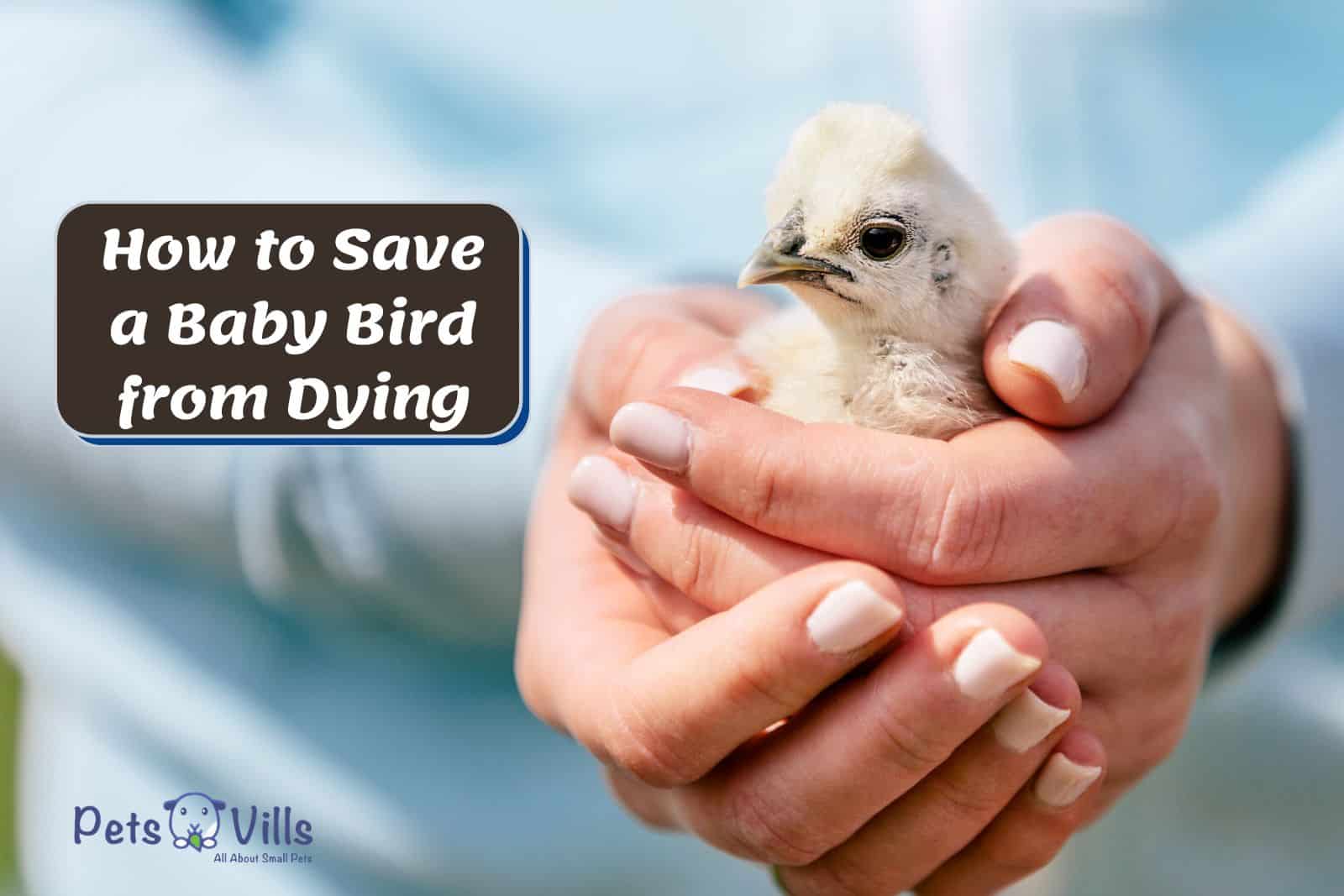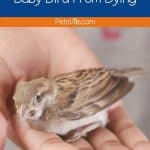Have you ever found a baby bird on the ground and didn’t know what to do? You’re not alone! Many people find themselves in this situation and don’t know how to help the bird.
You may be worried that the bird is going to die, but with a little bit of effort, you may be able to save its life.
In this blog post, I will teach you how to save a baby bird from dying. Keep reading for more information.
Table of Contents
Step-by-Step Guide on How to Save a Baby Bird
Step 1: Is it a Fledgling or a Nestling
If you find a baby bird that appears to be injured or in distress, your first instinct may be to try to help it.
However, it’s important to make sure that the bird actually needs your assistance before taking any action. The best way to do this is to determine whether the bird is a nestling or a fledgling.
Nestlings are babies that have not yet left the nest and have no feathers [1]. They are not able to fly or care for themselves in any way.
Nestlings are typically altricial, meaning they are born blind, naked, and helpless. They spend the majority of their time in the nest and are fed by their parents.
Fledglings, on the other hand, are young birds that have left the nest but aren’t yet able to fly well [2]. They typically have some feathers, but they may not be fully grown yet.
In contrast, fledglings are semi-altricial birds that are covered in feathers and can move about on their own but still rely on their parents for food.
Check out this video to learn more about the difference between nestling and fledging.
READ MORE: How Long Does it Take for a Baby Bird to Fly?
Step 2: Determine the Extent of the Injuries
In some cases, the bird may simply be cold or wet and in need of warmth and shelter. However, if the bird has broken bones or open wounds, it will require more intensive treatment.
Once you have determined the severity of the injuries, you can begin to take steps to save the bird’s life. If the injuries are minor, you may be able to care for the bird yourself.
However, if the injuries are more severe, you will need to take the bird to a qualified wildlife rehabilitator for treatment. Either way, by taking quick action, you can give an injured baby bird a fighting chance at survival.
Make sure to also read our guide about the signs a bird is dying.
Step 3: Check if the Parents Are Nearby
While it may be tempting to take the little guy home and care for him yourself, it’s important to remember that baby birds are best cared for by their parents.
In most cases, the best thing you can do is to leave the bird where you found him and keep an eye on him from a distance.
If you’re not sure whether or not the parents are nearby, you can try gently placing the bird back in his nest (if you can find it).
If you don’t see the parents return within a few hours, or if the bird appears to be injured, then you can take the necessary precautions.
READ MORE: Do Birds Remember Their Siblings?
How to Take Care of an Injured Baby Bird
If you find an injured baby bird, there are some simple steps you can take to help it recover.
1- Wear Protective Clothing
Handle with care! Wear gloves so you don’t get sick or infected, and protect yourself from disease-carrying birds by keeping your hands clean at all times [3].
After handling any type of fowl always ensure that you wash your hands
2- Keep the Bird Warm
Baby birds (especially nestlings) are not able to regulate their own body temperature, so they can easily become too cold.
Wrap the bird in a soft cloth or place it in a shoe box lined with a towel. You can also put a heating pad on low underneath the box.
Just make sure that the bird has enough ventilation and that it can move away from the heat if it starts to feel too warm.
3- Make a Temporary Nest
If you find an injured baby bird, the first thing you should do is create a makeshift nest. This will help to keep the bird warm and safe while you get it to a rehabilitation center or wildlife refuge.
To make a nest, simply line a small box or container with soft materials like cotton balls or fabric strips. You can also use a paper towel roll cut in half lengthwise.
Once the nest is prepared, gently place the bird inside and cover it with a light cloth. If possible, place the nest in a quiet area away from pets and children.
4- Provide Food and Water
Next, provide food and water. You can give the bird small pieces of soft fruit or insects. Avoid giving the bird milk, as this can make it sick.
If you don’t have any insects available, you can give the bird a little bit of raw chicken. For water, you can use a dropper or syringe to gently drop some water into the bird’s mouth.
Be careful not to overdo it, as too much water can drown the bird. Baby birds have very specific dietary needs, and feeding them the wrong food can do more harm than good.
If you are not sure of how and what to give it’s better not to give anything at all and contact a professional.
RELATED: Can Baby Birds Drink Water?
5- Contact a Wildlife Rehabilitation Center
Baby birds are delicate creatures, and it’s best to leave their care in the hands of experts. These centers are equipped to care for sick and injured animals, and they will be able to provide the bird with the medical attention it needs.
With a little time and care, you can give an injured baby bird a second chance at life.
Here’s a video for more useful tips.
CHECK: What causes baby birds to die in the nest?
FAQs
How do you know a bird is dying?
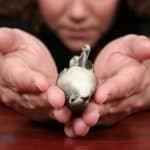
A dying bird will be very still with minimal movement and with closed eyes in a hunched-over position.
What to do if a bird is dying?
It is important to contact a wildlife rehabilitator or the local veterinarian to give you tips on what to do.
How long can a baby bird survive without the mother?
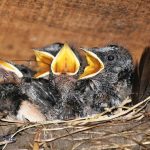
It will depend on the age of the bird. For nestlings only a few hours while older birds can go for 3-4 days.
Wrapping Up
It can be difficult to know what to do when you find a baby bird on the ground, but with a little guidance, you can save its life.
Remember to keep the bird calm and warm, and get it to a wildlife rehabilitator as soon as possible. Thank you for helping our feathered friends!
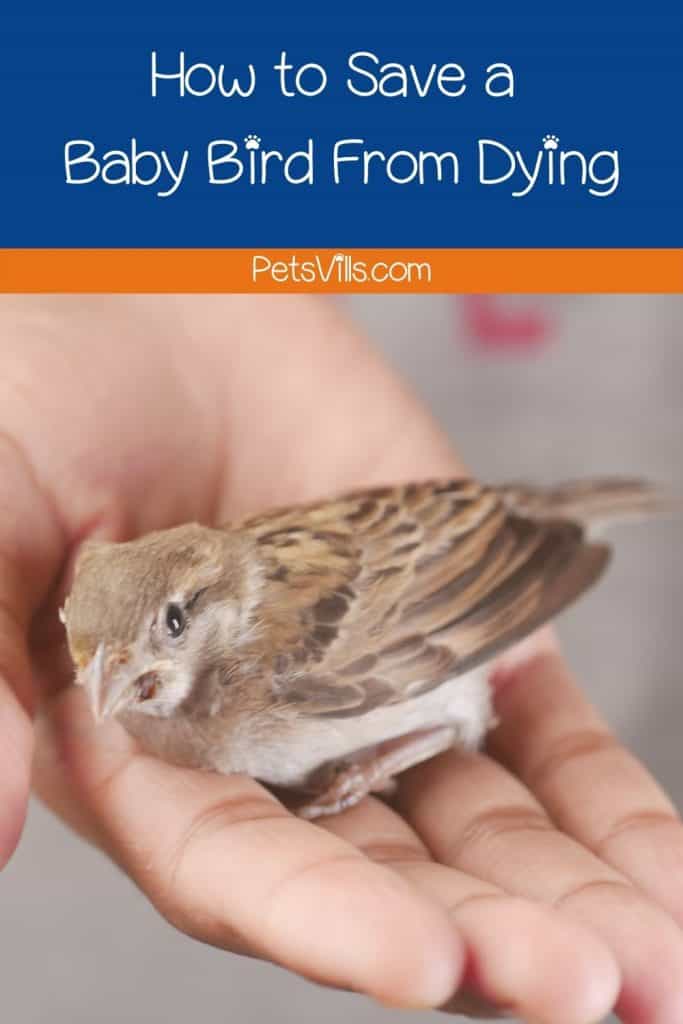
Have you tried saving a baby bird? Let us know your experience below!
Resources
- 1. Tinbergen JM, Boerlijst MC. Nestling Weight and Survival in Individual Great Tits (Parus major). The Journal of Animal Ecology. 1990;59(3):1113. doi:10.2307/5035
- 2. King DI, Degraaf RM, Smith M ‐L., Buonaccorsi JP. Habitat selection and habitat‐specific survival of fledgling ovenbirds ( Seiurus aurocapilla ). Journal of Zoology. 2006;269(4):414-421. doi:10.1111/j.1469-7998.2006.00158.x
- 3. Tsiodras S, Kelesidis T, Kelesidis I, Bauchinger U, Falagas ME. Human infections associated with wild birds. Journal of Infection. 2008;56(2):83-98. doi:10.1016/j.jinf.2007.11.001

Andreea is a very passionate content creator and her purpose is to provide you with the most interesting articles, while constantly discovering new facts. She’s been freelance writing for the past five years and has created numerous articles and educational materials while managing her own mom blog.
Read her Latest Articles
Find her on
FACEBOOK AND Instagram

